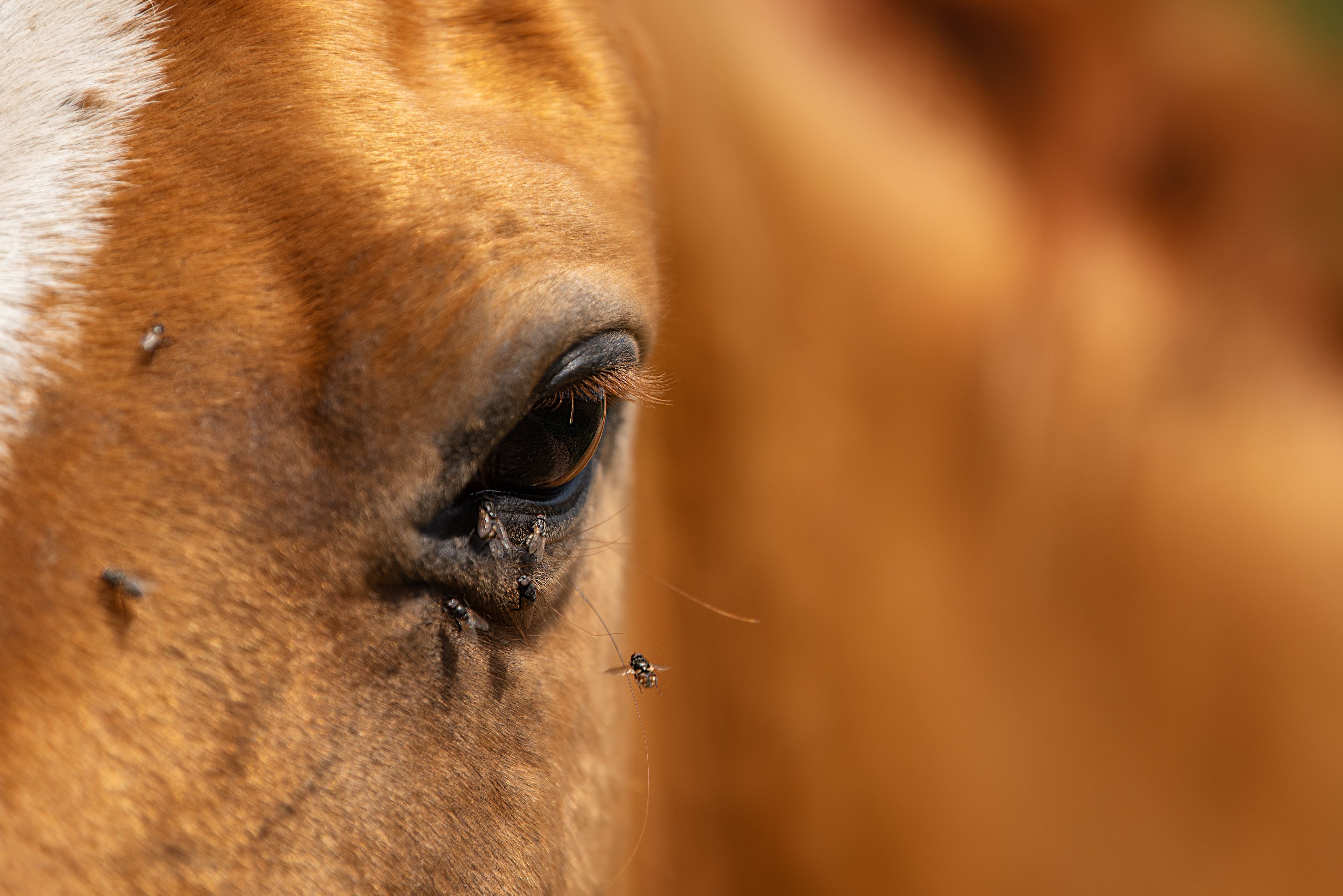When To Bring Cats Into The Barn (And When Not To)


Felines and equines can make a surprisingly good team
The riding school where I spent my formative years was its own little ecosystem.
The owner kept goldfish in the larger water troughs to control algae and guineas in the farm yard to keep down the population of mosquitos, flies and other nuisance insects. The guineas and a couple of chickens or ducks would also patrol empty horse stalls to pick at any bits of grain a horse may have dropped during a hasty meal, which cut down on mice.
Keeping other four-leggeds around your barn has some benefits, too. She also maintained a couple of barn cats who spent most of their time in the feed room, waiting to sniff out any mice getting close to the mother lode.
Cat-and-mouse control
Barn cats are often employed as a natural form of mouse control, which is important. Mice can destroy tack and equipment (I’ve learned the hard way they’re fond of chewing and burrowing into winter blankets if not stored properly). And of course mice can carry diseases that can endanger you and your horse.
If your barn attracts enough mice, other predators like snakes may also come calling to feast on them.
Leaving out poison for mice or rats isn’t a good option either, since you don’t know if another animal could encounter poisoned rodents and become exposed to toxic substances. Even though horses aren’t likely to eat a dead mouse in their stall, they may not avoid a water bucket containing one.
I’ve known many cats to bond with horses, which can be beneficial for both. One of the cats at the barn where I board my mare was a fan of curling up on her back for a nap when she was wearing her puffy winter blanket, and both of them seemed to enjoy that.
Most barn cats don’t require much maintenance once they’re established, and most of them learn quickly not to put themselves in horses’ way, so they don’t need much training, either.
That doesn’t mean it’s a good idea to pick up a cat from any old classified ad or shelter and toss it into your barn, however.
What’s a good mouser?
To be a responsible steward of barn cats takes some work and planning. Not all cats will do well in a barn setting; experts say it’s best to acclimate a cat to your barn when it is still young but mostly grown—around four to eight months old.
Kittens aren’t recommended for barn life because they can be easily caught by coyotes or hawks. Declawed cats should not be placed in a barn. Older adult felines will often leave in an attempt to find their way back to the place they came from. The cat will also need to have some experience with hunting, climbing, and self-defense outside before they can be expected to do well, so you’ll need to know a bit about their background to know if they will work.
Some humane societies have specific programs for barn or “working cats” whose histories are known and suggest they can hack the farm life.
The process of acclimation is also important. Cats should be started in a large crate or closed room like a feed room that can’t be accessed by other animals.
Acclimating cats should have food, water, and a litterbox in their space and should stay there for a few weeks (different rescues suggest different timeframes) before being allowed out. Afterward, they should continue to have food and water available and should be fed on a schedule.
The goal is to get them to think of your barn as their home base to discourage roaming.
A rustic feline home
Make sure your barn is ready for the cat. The cat will need shelter from the elements, and ideally someplace it could climb to escape a predator that may come into the barn.
To avoid attracting raccoons and opossums, make sure cat food is in closed containers or eaten up before nightfall.
You will need to feed your barn cat, even if they catch mice—the mouse population is likely to wax and wane, and they may leave in search of food. Also keep in mind that the cat will have no idea which animals are important to you and which are not; they may catch wild birds or chickens, so make sure to secure the latter and discourage the former from nesting in the barn.
It’s also important cats be spayed or neutered before release and properly vaccinated. Equine veterinarians can give barn cat booster vaccines to save a trip to the clinic. Collars are generally not recommended for barn cats who could get injured if they’re caught on something.
Many clinics will put a notch in the ear of an outdoor cat at the time of spay/neuter as a permanent indication they are a homed outdoor cat and not a stray.
Tags:Horse Sense

Acreage Life is part of the Catalyst Communications Network publication family.
















